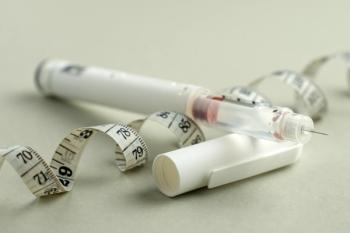
Sotatercept Cuts Risk of Disease Progression in Pulmonary Arterial Hypertension
Key Takeaways
- Sotatercept, an activin signaling inhibitor, reduces clinical worsening events by 76% in patients with PAH when combined with background therapy.
- The HYPERION trial showed significant benefits for patients diagnosed within a year, with consistent efficacy across subgroups.
New results from the phase 3 HYPERION trial demonstrate reduced risks as early as the year following diagnosis of pulmonary arterial hypertension.
Sotatercept (Winrevair; Merck & Co), in combination with background therapy, reduced the risk of clinical worsening events by 76% in recently diagnosed adults with pulmonary arterial hypertension (PAH) functional class (FC) II or III at intermediate or high risk of disease progression.
This information comes from the results of the phase 3 HYPERION trial (NCT04811092) and was presented at the 2025 European Respiratory Society Congress and published in the New England Journal of Medicine.1-3
What Are Sotatercept and PAH?
Sotatercept is the first activin signaling inhibitor therapy approved to treat adults with PAH. It was first approved in 2024 as an injection to increase exercise capacity. By improving the balance between proproliferative and antiproliferative signaling, sotatercept helps to modulate vascular proliferation and induce cellular changes linked to partial reversal of right ventricular remodeling, improved hemodynamics, and thinner vessel walls. The new results from the HYPERION program demonstrate further benefits of sotatercept, especially when initiated within the first year after a diagnosis of PAH.1,4
PAH, a rare, progressive, and serious blood vessel disorder, is characterized by the constriction of small pulmonary arteries and elevated blood pressure. A limited number of individuals worldwide live with the disorder, and patients are burdened by rapid progression. Individuals with PAH experience significant strain on the heart, which limits physical activity, induces heart failure, and reduces life expectancy; accordingly, the 5-year mortality rate for afflicted adults is 43%. Thus, treatments like sotatercept are sorely needed, with continued research essential to better elucidate its therapeutic properties.1
New HYPERION Data Indicate Benefits Following First Year Post Diagnosis
In HYPERION, the investigators specifically sought to examine the effects of sotatercept within the first year of diagnosis. Patients enrolled had functional class II or III PAH who had received a diagnosis less than a year earlier, were receiving double or triple background therapy, and had an intermediate or high risk of death. A random allotment of patients received either add-on subcutaneous sotatercept—at a starting dose of 0.3 mg/kg of body weight and escalated to the target dose of 0.7 mg/kg—or placebo every 3 weeks. A total of 320 patients were included, with 160 in each group.1,2
Following a median 13.2 months of follow-up, sotatercept reduced the risk of clinical worsening events by 76% (HR, 0.24; 95% CI, 0.14-0.41; P < .0001), measured by a composite end point of all-cause death, the need for nonplanned PAH-related hospitalization at 24 hours or more, atrial septostomy, lung transplantation, or PAH deterioration. There was at least 1 primary end point event that occurred in 17 patients (10.6%) in the sotatercept group and in 59 patients (36.9%) in the placebo group.1,2
Kaplan-Meier curves indicated early and sustained separation, with a treatment benefit of sotatercept observed within 6 weeks of randomization. Importantly, the effect of sotatercept was consistent across all prespecified subgroups, including patients with idiopathic PAH, those with connective tissue disease, patients on double or triple background therapy, and those at intermediate or intermediate-low risk.1
Key Safety Indications
A series of key secondary end points were measured and further demonstrated sotatercept’s efficacy. Any deterioration in exercise performance due to PAH was observed in 8 patients (5.0%) treated with sotatercept and 46 patients (28.8%) treated with placebo. Moreover, unplanned hospitalization for worsening PAH occurred in 3 sotatercept-treated patients (1.9%) and 14 placebo patients (8.8%), whereas death from any cause occurred in 7 sotatercept-treated patients (4.4%) and 6 placebo patients (3.8%).2
Safety indications were consistent with previous observations in the HYPERION research program. Adverse events (AEs) were observed in 89.4% vs 90.0% of patients administered sotatercept and placebo, respectively, whereas serious AEs were more likely in the placebo group. For patients receiving sotatercept, the most common AEs were epistaxis (31.9%) and telangiectasia (26.2%). Critically, no instances of atrial septostomy or lung transplantation were observed.2
“The patients with PAH enrolled in HYPERION were early in their treatment journey, had comorbidities and were older, which reflects the type of patients we are diagnosing in a contemporary real-world setting,” Vallerie McLaughlin, MD, professor of cardiovascular medicine and director of the Pulmonary Hypertension Program, University of Michigan, said in the news release. “I am encouraged by the compelling results of the HYPERION study demonstrating that initiation of [sotatercept] on top of background therapy within the first year of diagnosis significantly reduces the risk of clinical worsening events compared to placebo.”1
For pharmacists, sotatercept is a promising and effective option to improve outcomes in patients with PAH. By allowing for more effective exercise and improved blood flow, sotatercept targets the key underlying factors of PAH, offering patients a new avenue to reduce disease burden and improve quality of life.
REFERENCES
1. Winrevair (sotatercept-csrk) reduced the risk of clinical worsening events by 76% compared to placebo in patients recently diagnosed with PAH on background therapy in phase 3 HYPERION trial. Merck. News Release. Released September 30, 2025. Accessed October 6, 2025. https://www.merck.com/news/winrevair-sotatercept-csrk-reduced-the-risk-of-clinical-worsening-events-by-76-compared-to-placebo-in-patients-recently-diagnosed-with-pah-on-background-therapy-in-phase-3-hyperion-trial/
2. McLaughlin VV, Hoeper MM, Badesch DB, et al. Sotatercept for pulmonary arterial hypertension within the first year after diagnosis. N Engl J Med. 2025. Published September 30, 2025. doi:10.1056/NEJMoa2508170
3. Study of sotatercept in newly diagnosed intermediate- and high-risk PAH participants (MK-7962-005/A011-13) (HYPERION). ClinicalTrials.gov Identifier: NCT04811092. Last Updated May 13, 2025. Accessed October 6, 2025. https://clinicaltrials.gov/study/NCT04811092?term=sotatercept%20HYPERION&rank=1
4. Gallagher A. FDA approves sotatercept-csrk for pulmonary arterial hypertension. Pharmacy Times. Published March 27, 2024. Accessed October 6, 2025. https://www.pharmacytimes.com/view/fda-approves-sotatercept-csrk-for-pulmonary-arterial-hypertension
Newsletter
Stay informed on drug updates, treatment guidelines, and pharmacy practice trends—subscribe to Pharmacy Times for weekly clinical insights.



















































































































































































































